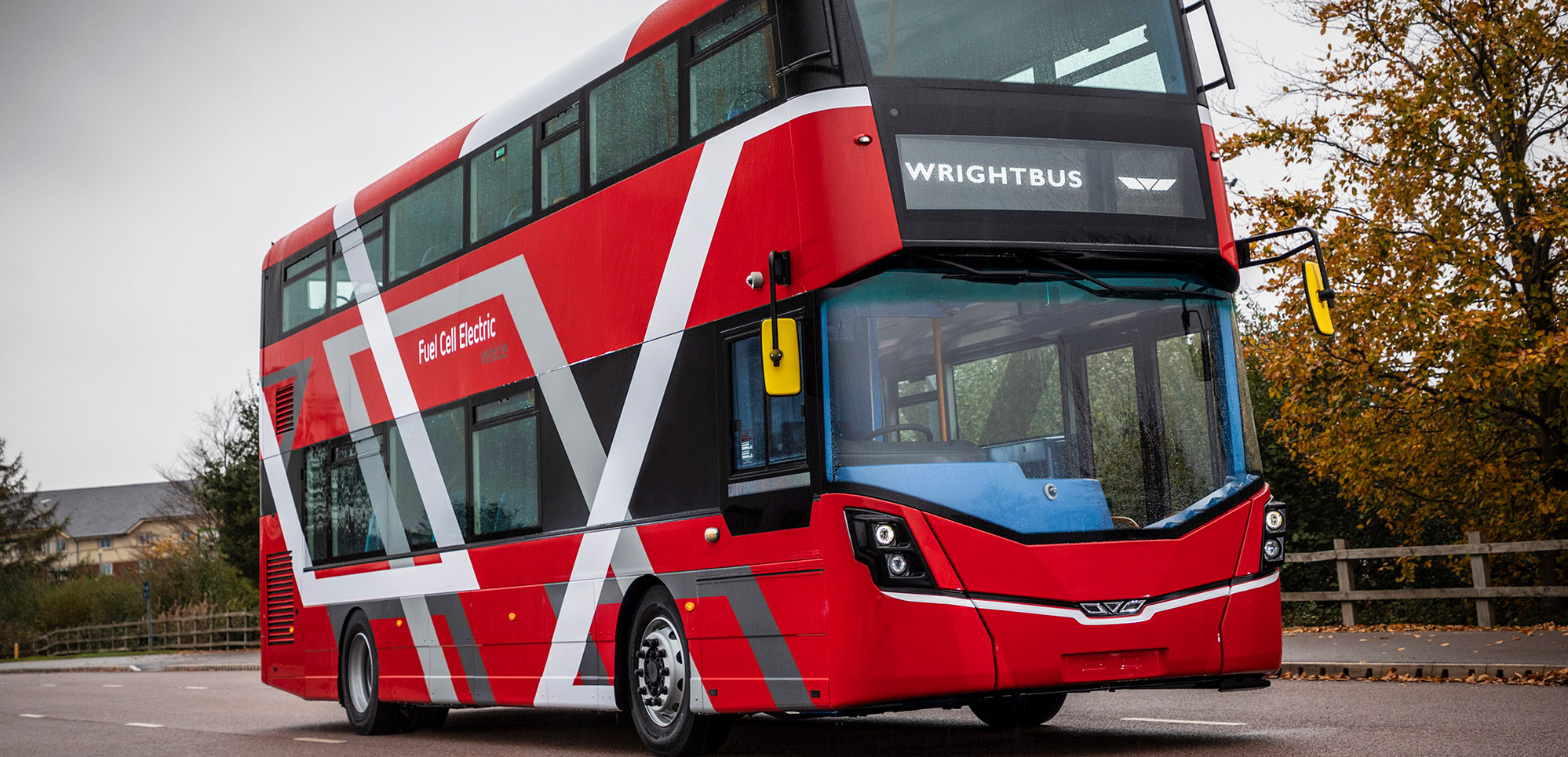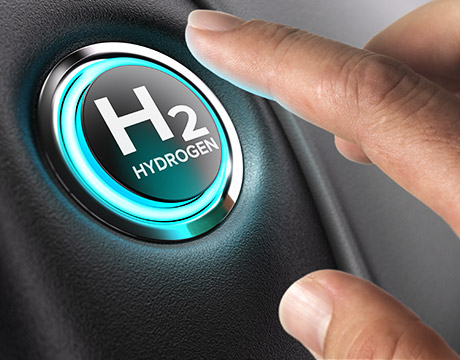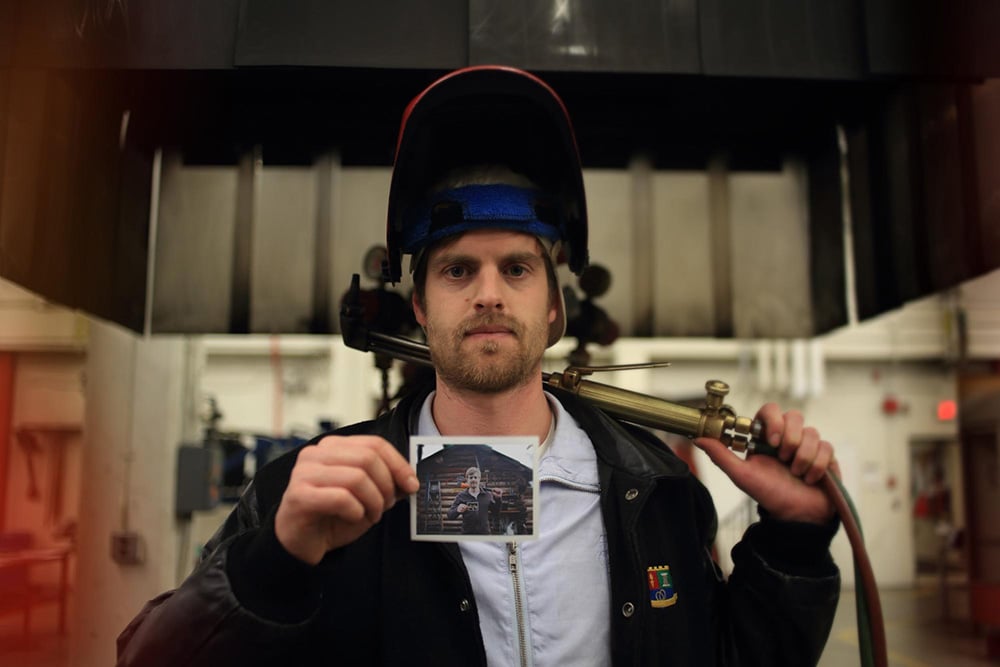
THE PAST AND FUTURE OF STEEL
Analysis
20 September 2020
We build everything from railroads to lunchboxes with steel, and for good reason: it’s strong, flexible and easily mass produced. But the iron production necessary to create steel is majorly polluting the planet. And it’s almost impossible to replace the material because we need it to keep building. So how do we move forward?
We can’t stop using steel. Here’s how we can make it the foundation of a new, sustainable iron age
Henry Bessemer was never cut out for school. He had better things to do, so he never finished. Instead, by the age of 17, he had gone into business for himself – as an inventor. By the time he was 30, he had invented the sugar cane extruder, a process for making gold paint from bronze powder and a method for manufacturing pencils from graphite. Before he was 40, he had 110 patents and a small fortune to his name.
But all that was merely prelude. In 1856, at age 43, Bessemer set off a revolution with a material that was to completely change and eventually dominate our cities, our buildings, our engineering, our tools – in a word, the whole of human society.
“The magnitude and importance of Mr Bessemer’s invention can hardly be overstated,” The Times wrote on 23 August 1856.
He nearly blew up his workshop in London’s St. Pancras before he achieved what he was trying to do: create steel simply, and cheaply, by blowing air through a vat of molten pig iron. It made a tremendous amount of noise and sent more than a few sparks flying (imagine blowing air on hot barbecue coals, but on steroids), but it got the job done; he’d invented a manageable, economical way to manufacture quality steel.
Before Bessemer, steel production was reserved to a very small circle of ironmasters with the skills and the tools to regulate the amount of carbon in iron. Steel is, in essence, iron with a very low carbon content. It’s a very valuable material because it combines the best of two worlds: it’s harder than simple wrought iron, but still flexible – unlike the brittle cast iron made in factories.
So Bessemer’s steel could not only be made more efficiently than earlier iron production methods, but the process was a lot easier. And it didn’t even take any extra fuel to produce in larger quantities – all you needed was air. It was thanks to Bessemer’s invention that steel could be mass produced for the first time. In 1867, a tonne of steel would have cost approximately €2,500 in today’s terms, but by 1884, that price had fallen to just €750.
That’s how we came to live in a world of steel. The Brooklyn Bridge, the Empire State Building, the Chrysler Building – steel makes it all possible. Steel went into the Titanic and still goes into the hulls of every modern container ship – plus the millions of containers they carry. Look at any concrete building, and the chances are that there’s steel reinforcement inside that concrete holding it up. Steel makes up the 1,051,767 km of rail lines in the world, not to mention the trains driving on them. Almost everything we use to get around has steel in it, from cars (900 kg on average) to bicycles. We store our food in steel containers, and we heat it up in steel pans. If you typically eat with a fork, you put a piece of steel in your mouth every day.
We build our whole world with steel. We’re also destroying our world with steel, because the history of iron and steel is one long, sordid story of sabre-rattling, megalomaniacs and business tycoons – and pollution, a whole lot of pollution.

Three times that iron changed the world
Strictly speaking, we can’t just talk about “steel” as if it’s all the same material. There are actually over 3,500 different types of steel, and the vast majority of them didn’t exist 20 years ago. One thing we can say, though, is that all of them start with iron. Any conversation about steel starts with iron.
Humans have been using iron and steel for thousands of years. To the Egyptians, iron was a divine metal. In ancient Egypt, iron was referred to as bia en pet (metal from the sky). That sounds like the stuff of legends, but it’s actually fairly accurate. The earliest iron was collected from meteorites; Tutankhamen was buried with a dagger made from meteoric iron. It was only hundreds of years later that people started digging into the earth for iron ore, from which they learned to extract the iron using heat.
Iron changed the world three times in three different forms: first, wrought iron; then, cast iron; and finally, Bessemer steel. Three names, roughly in chronological order, that refer to the production process. Few materials have had as much of an impact on the course of human history.
Few materials have had as much of an impact on the course of human history as iron
The first time that iron transformed human society was during the long transition from the Bronze Age to the Iron Age. Archaeologists see the Bronze Age as a period of trading and connections, thanks mainly to copper and tin, the two relatively rare metals that are combined to make bronze. That’s the metal that went into the tools, weapons and jewellery of that time. To the people of 3,000 years ago, these materials were what oil and gas are to us today, and they were what tied prehistoric Europe together.
The demand for copper and tin drove an ever-increasing concentration of power and wealth in a few key places in Europe that controlled the trade of these rare metals. These power centres stood out – literally and figuratively. Known as “hillforts”, remnants of them are scattered across Europe and studied by archaeologists today. One example is Mont Lassois near Vix in France, where, in 1953, archaeologists found the burial mound of a young woman who had been interred around 500BC. Among the treasures her grave revealed were a torc (neck ring) made of nearly half a kilogram of solid gold, as well as a 209 kg bronze vessel for mixing wine and water known as a krater. The grave at Mont Lassois is a snapshot of the twilight of an elite that, for a while, controlled the trade in bronze – a monument to transitory greatness, the prehistoric equivalent of a golden hotel rising up from the Las Vegas sands.
When iron came along, it broke this world apart.
Iron is in abundant supply, making up a full 5% of the Earth’s crust. In a matter of a few decades, all the Bronze Age power centres fell. By around 500BC, they were gone. In many cases, their demise was a violent affair, because iron makes better weapons than bronze (and more importantly, more of them).
The old ties of Europe frayed, and the old order fragmented. Europe’s peoples began producing their own iron, making their own weapons and controlling their own regions. The Belgae, Boii, Frisii, Helvetii: these are the people who gave their names to the lands we know today as Belgium, Bohemia, Frisia, Switzerland.
A second Iron Age ...
Through the centuries that followed, all iron production was small scale. Iron is made by heating iron ore in clay or stone smelters. This releases the raw, molten iron within. Smelters like these are fuelled by charcoal.
In 1720, there were 60 smelters operating in England that together burned a total of 830,000 tonnes of wood to produce the charcoal used for their furnaces. At the start of the Industrial Revolution, the limiting factor was not a lack of iron ore; there simply weren’t enough trees to burn.
A crucial technological advancement was the coke-fired furnace. With this new fuel, pioneered by British entrepreneur Abraham Darby in 1709, iron production skyrocketed. In 1700, total British iron production was 12,000 tonnes per year. By 1850, it had soared to 2 million.
An additional benefit is that the furnace gets hot enough to heat the iron to its melting point, which means you can cast it. So, suddenly, you can make a lot more things, from ploughshares to bridge spans. In 1851, as part of the first Great Exhibition at the Crystal Palace in London, there was a special presentation showing off all the great things you could make with cast iron, including the Crystal Palace itself, a spectacular building of cast iron and plate glass that was a London landmark until 1936.
You need cast iron to build steam engines and ships. And once the first cast-iron bridge appeared, everybody wanted one. Most of all, the Industrial Revolution needed rails – lots and lots of rails. The first intercity railway line went down in 1830, with 56 km stretching from Liverpool to Manchester. Just 30 years later, there were over 100,000 km of railway lines around the world. At about 25 kg of iron per metre, that’s about 2.5 billion kgs of iron.

In short, the Industrial Revolution was really just a second Iron Age.
And that was still before Bessemer almost blew up his laboratory inventing a better and cheaper form of iron: steel.
When Bessemer presented his invention to the British Association for the Advancement of Science, the crème de la crème of British science and industry, he told them: “The manufacture of iron in this country has attained such an important position that any improvement in this branch of our national industry cannot fail to be a source of general interest.” He wasn’t wrong.
… and a third
Until well into the 19th century, it was only highly skilled craftsmen who had the ability to produce quality iron and steel.
Bessemer’s invention didn’t just kick off the third Iron Age; he also started the ball rolling on a revolution in overall knowledge about the processes at work within iron and steel. The invention of X-ray imaging in 1905 made it possible to look inside the metal and observe its crystalline structures. From then on, craftsmanship went hand-in-hand with science – and the partnership proved extremely fruitful.
At that point, advancements really started to move fast. Only a few years after Bessemer’s invention, the Siemens-Martin process came along, making another method of producing steel on an industrial scale. Later, another man found a way to improve Bessemer’s method to allow it to handle even the previously problematic phosphorus-rich iron ore. Soon, cheap steel was pouring into the market at a mind-boggling pace. Fortuitously, the demand was there.
Once again, most of that demand was for rails, but steel was also vital to the shipbuilding industry, and later, the automotive industry. Steel ploughs were soon digging into the Great Plains of America, even as they kicked off a revolution in the construction industry. In 1885, steel made construction of the first 10-storey building in New York City possible, and the skyscraper was born.
This is where the steel magnates began to arise – families like Thyssen, Krupp, Carnegie and Tata, but also names like Gillette, who came up with the idea of using cheap plate steel to manufacture disposable razors.
Any self-respecting industrialised country had to produce steel. Steel is manly. Steel is national pride.

Perhaps the most exquisite ode to this material can be seen today in the heart of Europe: the Atomium, one of Brussels’ icons, built in 1958 for the World’s Fair. It’s a giant model of an iron crystal, a hundred metres tall, made from stainless steel. It’s apt because in a very real way, the European Union started with the European Coal and Steel Community, established by the Treaty of Paris in 1951.
Europe’s bones are steel. It holds the continent together – literally, in the form of thousands of kilometres of railway lines, and figuratively, in the economic sense. It’s hard but mouldable, and with a little energy, it can even be made fluid, democratic, modern. The society in ancient Europe that was broken with iron is now being rebuilt from steel: a united Europe.
But what has that cost us?
Steel, the great polluter
There’s one big problem that all these Iron Ages have in common: the mountains of pollution that iron and steel leave behind.
The rolling hills of Tuscany are both rich in mineral wealth and heavily contaminated, and they have been since before recorded history began. On Elba, soil samples still contain measurable levels of pollution from third century BC iron production. Meanwhile, on the mainland, a woman who lived in 350BC was found to have heavy metals contamination in her hair, one of the medical indications of heavy metal poisoning.
Iron production was responsible for widespread deforestation in 16th century England. It’s the reason why the inhabitants of Sussex requested the king ban furnaces in 1548. They had seen that when you build a furnace, all the trees in a four km radius around it simply go up in smoke. This was one of the original climate protests.
Now, in the 21st century, we have taken that pollution to the next level. China, the world’s leading steel producer, is choking on its own steel – literally. The air in Beijing has a content of fine particulates that is far above the WHO’s standards for human health, and it’s not just coal power stations: the coal-driven steel industry is the primary culprit.
In case you were wondering, steel also accounts for 7% of total global CO2 emissions.

So why do we keep using it? The answer is simple: steel is ridiculously cheap. To produce a ton of steel in a modern steel mill, you need 1370 kg of iron ore, 600 kg of cokes, 270 kg of limestone and 125 kg of scrap. That makes the cost of a tonne of steel €500 – in other words, 50 eurocents per kilogram. A kilo of potatoes will actually cost you more.
And there’s no end in sight. As urbanisation spreads across Asia and Africa, demand for steel is only going to go up. Even in the EU, we haven’t managed to temper our love affair with steel. Although European steel production has declined by 50% since 1950, we’re not actually using any less of it. In fact, per capita steel consumption in the EU increased from 278 kg in 2012 to 310 kg in 2019. And the EU is the world’s biggest steel importer, bringing in 40 million tonnes in 2019.
In that same year, worldwide production was 1.8 billion tonnes. A steel industry forecast predicts that this number will double by 2050.
But when you buy your tonne of steel for €500, be sure to read the fine print: it also comes with 1.85 tonnes of CO2 emissions. And that’s despite the fact that production of iron and steel has become much cleaner and more efficient over the years. It’s the paradox of efficiency. What do we gain if we just use that much more?
The good news is: there’s a sustainable way
We’re simply too dependent on steel. Whether we could meet our climate targets without steel is a very real question. For example, have you ever thought about what wind turbines are made out of?
In his hard-hitting piece "What I see when I see a wind turbine", Vaclav Smil does the math on what goes into building one. The large 5 mw model contains no less than 900 tonnes of steel – and that took a little under 700 tonnes of coal to make. “The machines themselves are pure embodiments of fossil fuels,” he explains dryly.
But could we move away from steel?
“Would we want to?” is Erik Offerman’s answer. He’s a materials expert at Delft University of Technology and something of a 21st-century blacksmith.
“Steel is strong, cheap and an amazingly versatile material,” he says. “And because it is completely recyclable, it fits into any story about a circular economy.”
He’s right: steel is not only the most used metal in the world, but the most re-used as well. The big advantage of steel (and of metals in general) is that they can be recycled again and again. Even ancient peoples were well aware and did so extensively. I wrote an article about this, which you can read hereMaybe steel and sustainability can go together after all.
But there’s a “but”.

To keep steel recyclable, it needs to be kept as pure as possible. Other elements are often added to iron, like silicon and manganese. Chromium, vanadium, niobium, nickel and molybdenum are added to give steel various properties, making it rust-resistant, stronger or more ductile. These kinds of specialised steel alloys are harder to recycle, and it’s easy to see why: if you melt down a pile of random steel alloys, you end up with a hodgepodge of different kinds of steel with no way to know what properties it will have. That makes low-grade steel, which can then only be used in low-grade applications like concrete reinforcement.
There’s a lot of innovative research being done to find ways of keeping steel as recyclable as possible. Offerman Hear Offerman talk about his work in a podcastis one of the people working on this. He is finding ways to control the microstructure of steel using milling and temperature to produce high-quality steel types with a limited palette of alloying elements. The aim is to not only make the steel easier to recycle, but to use less of it.
And there are other paths to a more sustainable steel.
Just like in the 18th century, what is required is a critical change in fuel consumption and the process of reducing iron ore. The iron and steel industry sucks up a lot of energy, and too much of it comes from fossil fuels.
One promising emerging technology is hydrogen-based steel production. The Hydrogen Breakthrough Ironmaking Technology (HYBRIT) has shown that sustainably produced hydrogen can be used to produce steel. HYBRIT is a joint venture of three relatively small Swedish firms with big plans to liberate the Swedish iron and steel industry from dependence on fossil fuels.
The pilot project was launched in 2018, but for the time being, “green steel” still remains 20-30% more expensive than ordinary steel. HYBRIT says that its goal is to be producing this steel at competitive prices by 2040.
Then there’s all the electric arc furnaces all over the world, which are relatively small-scale production facilities using electricity instead of cokes. The electric arc furnaces in Europe take up about 40% of the produced steel.
Their operation depends on melting down scrap: in essence, recycling. Expanding this production would help but would mean bringing steel production back to Europe (what economists like to call “reshoring”).
We have to move into a fourth – sustainable – Iron Age
Green steel and implementing reuse on a massive scale – as far as the technology goes, we can do this. But this transition also demands a new way of thinking: circular instead of linear, long-term instead of short-term.

For green steel, we have to choose sustainable over efficient; less and better has to win out over cheap and more. These are choices we can make. We can even make it the defining characteristic of “Made in Europe” steel.
But it will require a mentality that doesn’t really resonate with the man of steel, so it means rethinking everything about our whole concept of iron and steel. That image as the material of weapons of war, of heavy industry, of the symbol of national pride and economic progress for many nations – all that has to go.
That’s how we can turn steel from the problem child in terms of pollution into the foundation of a strong, sustainable world – a world built on a clean material that can be recycled endlessly.
That’s what a sustainable fourth Iron Age looks like. But unfortunately, that’s still a long way off.
Translated from the Dutch by Kyle Wohlmut.
20 September 2020
We build everything from railroads to lunchboxes with steel, and for good reason: it’s strong, flexible and easily mass produced. But the iron production necessary to create steel is majorly polluting the planet. And it’s almost impossible to replace the material because we need it to keep building. So how do we move forward?
We can’t stop using steel. Here’s how we can make it the foundation of a new, sustainable iron age
Henry Bessemer was never cut out for school. He had better things to do, so he never finished. Instead, by the age of 17, he had gone into business for himself – as an inventor. By the time he was 30, he had invented the sugar cane extruder, a process for making gold paint from bronze powder and a method for manufacturing pencils from graphite. Before he was 40, he had 110 patents and a small fortune to his name.
But all that was merely prelude. In 1856, at age 43, Bessemer set off a revolution with a material that was to completely change and eventually dominate our cities, our buildings, our engineering, our tools – in a word, the whole of human society.
“The magnitude and importance of Mr Bessemer’s invention can hardly be overstated,” The Times wrote on 23 August 1856.
He nearly blew up his workshop in London’s St. Pancras before he achieved what he was trying to do: create steel simply, and cheaply, by blowing air through a vat of molten pig iron. It made a tremendous amount of noise and sent more than a few sparks flying (imagine blowing air on hot barbecue coals, but on steroids), but it got the job done; he’d invented a manageable, economical way to manufacture quality steel.
Before Bessemer, steel production was reserved to a very small circle of ironmasters with the skills and the tools to regulate the amount of carbon in iron. Steel is, in essence, iron with a very low carbon content. It’s a very valuable material because it combines the best of two worlds: it’s harder than simple wrought iron, but still flexible – unlike the brittle cast iron made in factories.
So Bessemer’s steel could not only be made more efficiently than earlier iron production methods, but the process was a lot easier. And it didn’t even take any extra fuel to produce in larger quantities – all you needed was air. It was thanks to Bessemer’s invention that steel could be mass produced for the first time. In 1867, a tonne of steel would have cost approximately €2,500 in today’s terms, but by 1884, that price had fallen to just €750.
That’s how we came to live in a world of steel. The Brooklyn Bridge, the Empire State Building, the Chrysler Building – steel makes it all possible. Steel went into the Titanic and still goes into the hulls of every modern container ship – plus the millions of containers they carry. Look at any concrete building, and the chances are that there’s steel reinforcement inside that concrete holding it up. Steel makes up the 1,051,767 km of rail lines in the world, not to mention the trains driving on them. Almost everything we use to get around has steel in it, from cars (900 kg on average) to bicycles. We store our food in steel containers, and we heat it up in steel pans. If you typically eat with a fork, you put a piece of steel in your mouth every day.
We build our whole world with steel. We’re also destroying our world with steel, because the history of iron and steel is one long, sordid story of sabre-rattling, megalomaniacs and business tycoons – and pollution, a whole lot of pollution.

Three times that iron changed the world
Strictly speaking, we can’t just talk about “steel” as if it’s all the same material. There are actually over 3,500 different types of steel, and the vast majority of them didn’t exist 20 years ago. One thing we can say, though, is that all of them start with iron. Any conversation about steel starts with iron.
Humans have been using iron and steel for thousands of years. To the Egyptians, iron was a divine metal. In ancient Egypt, iron was referred to as bia en pet (metal from the sky). That sounds like the stuff of legends, but it’s actually fairly accurate. The earliest iron was collected from meteorites; Tutankhamen was buried with a dagger made from meteoric iron. It was only hundreds of years later that people started digging into the earth for iron ore, from which they learned to extract the iron using heat.
Iron changed the world three times in three different forms: first, wrought iron; then, cast iron; and finally, Bessemer steel. Three names, roughly in chronological order, that refer to the production process. Few materials have had as much of an impact on the course of human history.
Few materials have had as much of an impact on the course of human history as iron
The first time that iron transformed human society was during the long transition from the Bronze Age to the Iron Age. Archaeologists see the Bronze Age as a period of trading and connections, thanks mainly to copper and tin, the two relatively rare metals that are combined to make bronze. That’s the metal that went into the tools, weapons and jewellery of that time. To the people of 3,000 years ago, these materials were what oil and gas are to us today, and they were what tied prehistoric Europe together.
The demand for copper and tin drove an ever-increasing concentration of power and wealth in a few key places in Europe that controlled the trade of these rare metals. These power centres stood out – literally and figuratively. Known as “hillforts”, remnants of them are scattered across Europe and studied by archaeologists today. One example is Mont Lassois near Vix in France, where, in 1953, archaeologists found the burial mound of a young woman who had been interred around 500BC. Among the treasures her grave revealed were a torc (neck ring) made of nearly half a kilogram of solid gold, as well as a 209 kg bronze vessel for mixing wine and water known as a krater. The grave at Mont Lassois is a snapshot of the twilight of an elite that, for a while, controlled the trade in bronze – a monument to transitory greatness, the prehistoric equivalent of a golden hotel rising up from the Las Vegas sands.
When iron came along, it broke this world apart.
Iron is in abundant supply, making up a full 5% of the Earth’s crust. In a matter of a few decades, all the Bronze Age power centres fell. By around 500BC, they were gone. In many cases, their demise was a violent affair, because iron makes better weapons than bronze (and more importantly, more of them).
The old ties of Europe frayed, and the old order fragmented. Europe’s peoples began producing their own iron, making their own weapons and controlling their own regions. The Belgae, Boii, Frisii, Helvetii: these are the people who gave their names to the lands we know today as Belgium, Bohemia, Frisia, Switzerland.
A second Iron Age ...
Through the centuries that followed, all iron production was small scale. Iron is made by heating iron ore in clay or stone smelters. This releases the raw, molten iron within. Smelters like these are fuelled by charcoal.
In 1720, there were 60 smelters operating in England that together burned a total of 830,000 tonnes of wood to produce the charcoal used for their furnaces. At the start of the Industrial Revolution, the limiting factor was not a lack of iron ore; there simply weren’t enough trees to burn.
A crucial technological advancement was the coke-fired furnace. With this new fuel, pioneered by British entrepreneur Abraham Darby in 1709, iron production skyrocketed. In 1700, total British iron production was 12,000 tonnes per year. By 1850, it had soared to 2 million.
An additional benefit is that the furnace gets hot enough to heat the iron to its melting point, which means you can cast it. So, suddenly, you can make a lot more things, from ploughshares to bridge spans. In 1851, as part of the first Great Exhibition at the Crystal Palace in London, there was a special presentation showing off all the great things you could make with cast iron, including the Crystal Palace itself, a spectacular building of cast iron and plate glass that was a London landmark until 1936.
You need cast iron to build steam engines and ships. And once the first cast-iron bridge appeared, everybody wanted one. Most of all, the Industrial Revolution needed rails – lots and lots of rails. The first intercity railway line went down in 1830, with 56 km stretching from Liverpool to Manchester. Just 30 years later, there were over 100,000 km of railway lines around the world. At about 25 kg of iron per metre, that’s about 2.5 billion kgs of iron.

In short, the Industrial Revolution was really just a second Iron Age.
And that was still before Bessemer almost blew up his laboratory inventing a better and cheaper form of iron: steel.
When Bessemer presented his invention to the British Association for the Advancement of Science, the crème de la crème of British science and industry, he told them: “The manufacture of iron in this country has attained such an important position that any improvement in this branch of our national industry cannot fail to be a source of general interest.” He wasn’t wrong.
… and a third
Until well into the 19th century, it was only highly skilled craftsmen who had the ability to produce quality iron and steel.
Bessemer’s invention didn’t just kick off the third Iron Age; he also started the ball rolling on a revolution in overall knowledge about the processes at work within iron and steel. The invention of X-ray imaging in 1905 made it possible to look inside the metal and observe its crystalline structures. From then on, craftsmanship went hand-in-hand with science – and the partnership proved extremely fruitful.
At that point, advancements really started to move fast. Only a few years after Bessemer’s invention, the Siemens-Martin process came along, making another method of producing steel on an industrial scale. Later, another man found a way to improve Bessemer’s method to allow it to handle even the previously problematic phosphorus-rich iron ore. Soon, cheap steel was pouring into the market at a mind-boggling pace. Fortuitously, the demand was there.
Once again, most of that demand was for rails, but steel was also vital to the shipbuilding industry, and later, the automotive industry. Steel ploughs were soon digging into the Great Plains of America, even as they kicked off a revolution in the construction industry. In 1885, steel made construction of the first 10-storey building in New York City possible, and the skyscraper was born.
This is where the steel magnates began to arise – families like Thyssen, Krupp, Carnegie and Tata, but also names like Gillette, who came up with the idea of using cheap plate steel to manufacture disposable razors.
Any self-respecting industrialised country had to produce steel. Steel is manly. Steel is national pride.

Perhaps the most exquisite ode to this material can be seen today in the heart of Europe: the Atomium, one of Brussels’ icons, built in 1958 for the World’s Fair. It’s a giant model of an iron crystal, a hundred metres tall, made from stainless steel. It’s apt because in a very real way, the European Union started with the European Coal and Steel Community, established by the Treaty of Paris in 1951.
Europe’s bones are steel. It holds the continent together – literally, in the form of thousands of kilometres of railway lines, and figuratively, in the economic sense. It’s hard but mouldable, and with a little energy, it can even be made fluid, democratic, modern. The society in ancient Europe that was broken with iron is now being rebuilt from steel: a united Europe.
But what has that cost us?
Steel, the great polluter
There’s one big problem that all these Iron Ages have in common: the mountains of pollution that iron and steel leave behind.
The rolling hills of Tuscany are both rich in mineral wealth and heavily contaminated, and they have been since before recorded history began. On Elba, soil samples still contain measurable levels of pollution from third century BC iron production. Meanwhile, on the mainland, a woman who lived in 350BC was found to have heavy metals contamination in her hair, one of the medical indications of heavy metal poisoning.
Iron production was responsible for widespread deforestation in 16th century England. It’s the reason why the inhabitants of Sussex requested the king ban furnaces in 1548. They had seen that when you build a furnace, all the trees in a four km radius around it simply go up in smoke. This was one of the original climate protests.
Now, in the 21st century, we have taken that pollution to the next level. China, the world’s leading steel producer, is choking on its own steel – literally. The air in Beijing has a content of fine particulates that is far above the WHO’s standards for human health, and it’s not just coal power stations: the coal-driven steel industry is the primary culprit.
In case you were wondering, steel also accounts for 7% of total global CO2 emissions.

So why do we keep using it? The answer is simple: steel is ridiculously cheap. To produce a ton of steel in a modern steel mill, you need 1370 kg of iron ore, 600 kg of cokes, 270 kg of limestone and 125 kg of scrap. That makes the cost of a tonne of steel €500 – in other words, 50 eurocents per kilogram. A kilo of potatoes will actually cost you more.
And there’s no end in sight. As urbanisation spreads across Asia and Africa, demand for steel is only going to go up. Even in the EU, we haven’t managed to temper our love affair with steel. Although European steel production has declined by 50% since 1950, we’re not actually using any less of it. In fact, per capita steel consumption in the EU increased from 278 kg in 2012 to 310 kg in 2019. And the EU is the world’s biggest steel importer, bringing in 40 million tonnes in 2019.
In that same year, worldwide production was 1.8 billion tonnes. A steel industry forecast predicts that this number will double by 2050.
But when you buy your tonne of steel for €500, be sure to read the fine print: it also comes with 1.85 tonnes of CO2 emissions. And that’s despite the fact that production of iron and steel has become much cleaner and more efficient over the years. It’s the paradox of efficiency. What do we gain if we just use that much more?
The good news is: there’s a sustainable way
We’re simply too dependent on steel. Whether we could meet our climate targets without steel is a very real question. For example, have you ever thought about what wind turbines are made out of?
In his hard-hitting piece "What I see when I see a wind turbine", Vaclav Smil does the math on what goes into building one. The large 5 mw model contains no less than 900 tonnes of steel – and that took a little under 700 tonnes of coal to make. “The machines themselves are pure embodiments of fossil fuels,” he explains dryly.
But could we move away from steel?
“Would we want to?” is Erik Offerman’s answer. He’s a materials expert at Delft University of Technology and something of a 21st-century blacksmith.
“Steel is strong, cheap and an amazingly versatile material,” he says. “And because it is completely recyclable, it fits into any story about a circular economy.”
He’s right: steel is not only the most used metal in the world, but the most re-used as well. The big advantage of steel (and of metals in general) is that they can be recycled again and again. Even ancient peoples were well aware and did so extensively. I wrote an article about this, which you can read hereMaybe steel and sustainability can go together after all.
But there’s a “but”.

To keep steel recyclable, it needs to be kept as pure as possible. Other elements are often added to iron, like silicon and manganese. Chromium, vanadium, niobium, nickel and molybdenum are added to give steel various properties, making it rust-resistant, stronger or more ductile. These kinds of specialised steel alloys are harder to recycle, and it’s easy to see why: if you melt down a pile of random steel alloys, you end up with a hodgepodge of different kinds of steel with no way to know what properties it will have. That makes low-grade steel, which can then only be used in low-grade applications like concrete reinforcement.
There’s a lot of innovative research being done to find ways of keeping steel as recyclable as possible. Offerman Hear Offerman talk about his work in a podcastis one of the people working on this. He is finding ways to control the microstructure of steel using milling and temperature to produce high-quality steel types with a limited palette of alloying elements. The aim is to not only make the steel easier to recycle, but to use less of it.
And there are other paths to a more sustainable steel.
Just like in the 18th century, what is required is a critical change in fuel consumption and the process of reducing iron ore. The iron and steel industry sucks up a lot of energy, and too much of it comes from fossil fuels.
One promising emerging technology is hydrogen-based steel production. The Hydrogen Breakthrough Ironmaking Technology (HYBRIT) has shown that sustainably produced hydrogen can be used to produce steel. HYBRIT is a joint venture of three relatively small Swedish firms with big plans to liberate the Swedish iron and steel industry from dependence on fossil fuels.
The pilot project was launched in 2018, but for the time being, “green steel” still remains 20-30% more expensive than ordinary steel. HYBRIT says that its goal is to be producing this steel at competitive prices by 2040.
Then there’s all the electric arc furnaces all over the world, which are relatively small-scale production facilities using electricity instead of cokes. The electric arc furnaces in Europe take up about 40% of the produced steel.
Their operation depends on melting down scrap: in essence, recycling. Expanding this production would help but would mean bringing steel production back to Europe (what economists like to call “reshoring”).
We have to move into a fourth – sustainable – Iron Age
Green steel and implementing reuse on a massive scale – as far as the technology goes, we can do this. But this transition also demands a new way of thinking: circular instead of linear, long-term instead of short-term.

For green steel, we have to choose sustainable over efficient; less and better has to win out over cheap and more. These are choices we can make. We can even make it the defining characteristic of “Made in Europe” steel.
But it will require a mentality that doesn’t really resonate with the man of steel, so it means rethinking everything about our whole concept of iron and steel. That image as the material of weapons of war, of heavy industry, of the symbol of national pride and economic progress for many nations – all that has to go.
That’s how we can turn steel from the problem child in terms of pollution into the foundation of a strong, sustainable world – a world built on a clean material that can be recycled endlessly.
That’s what a sustainable fourth Iron Age looks like. But unfortunately, that’s still a long way off.
Translated from the Dutch by Kyle Wohlmut.
ARCHAEOLOGIST
















 I
I
